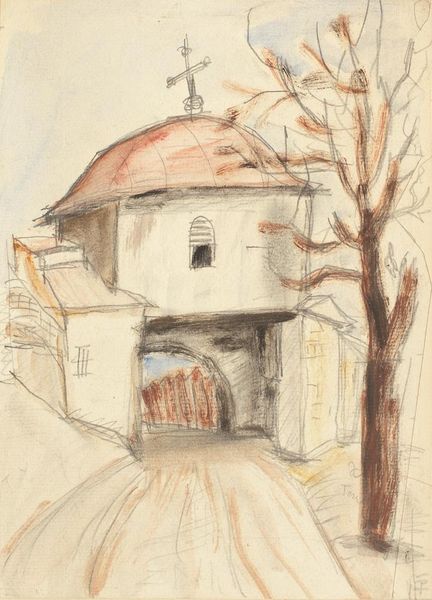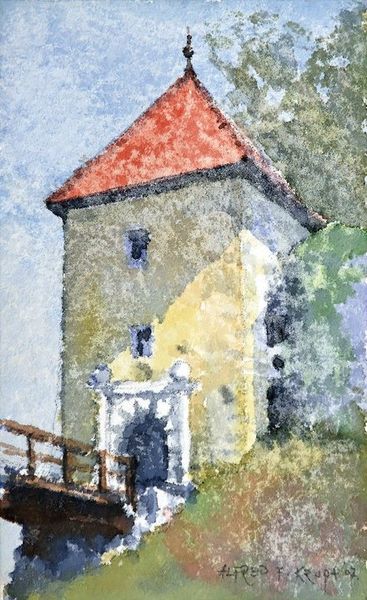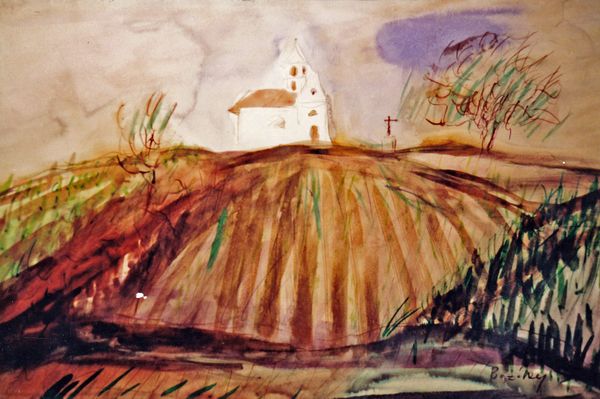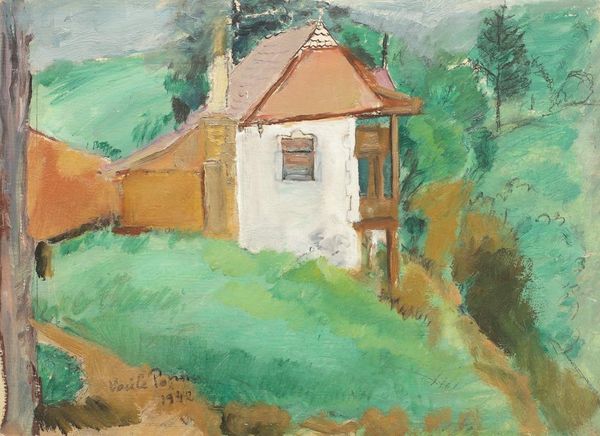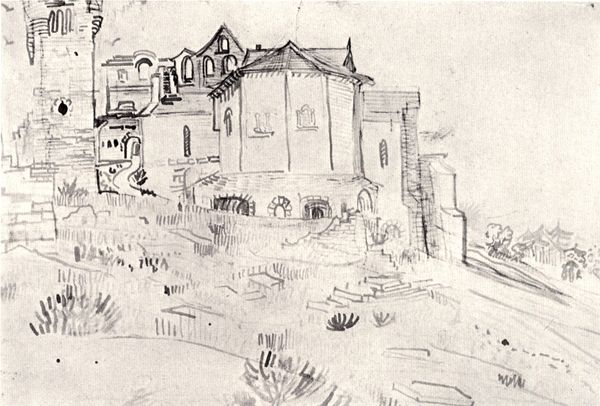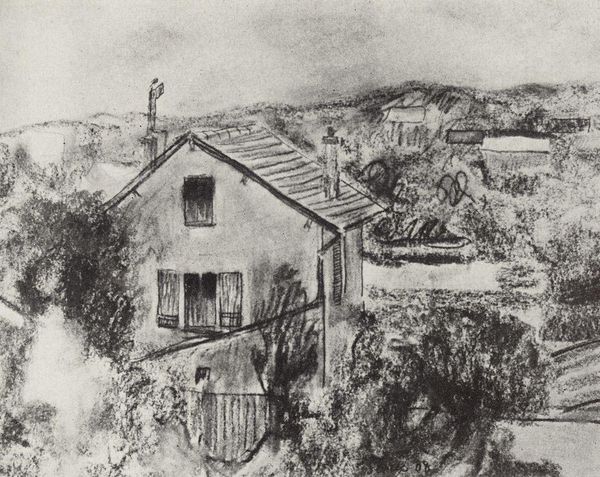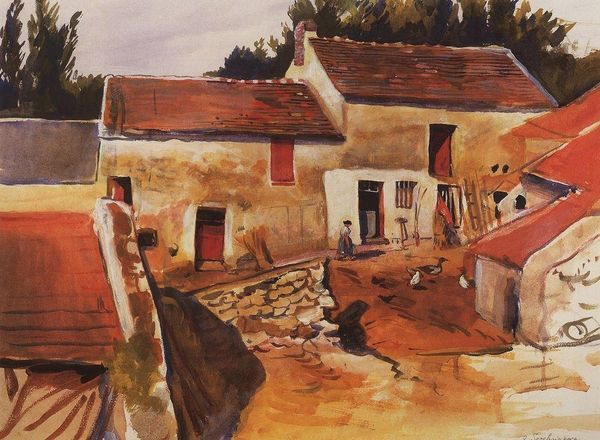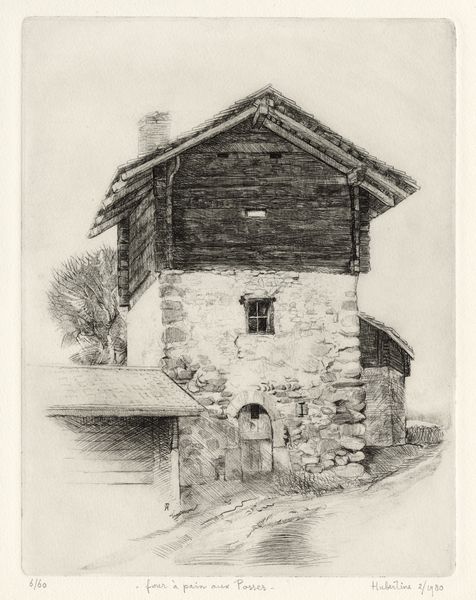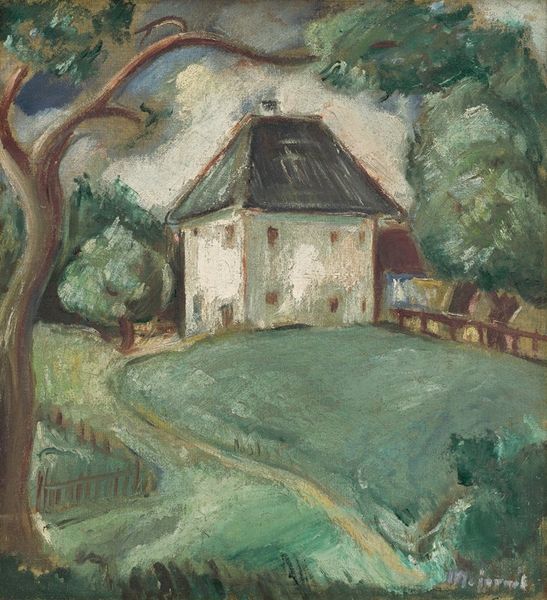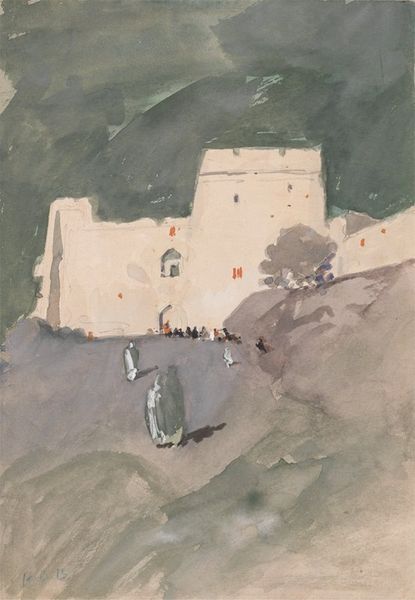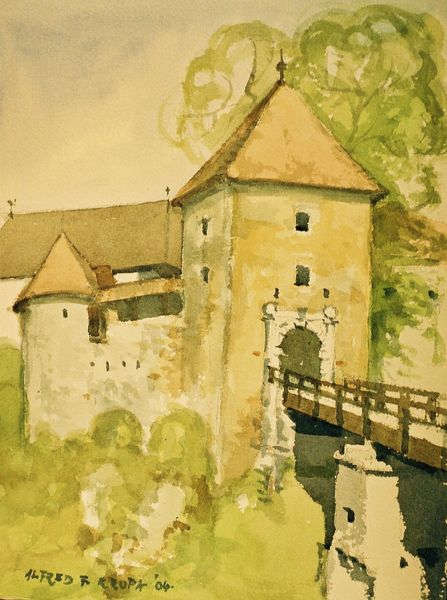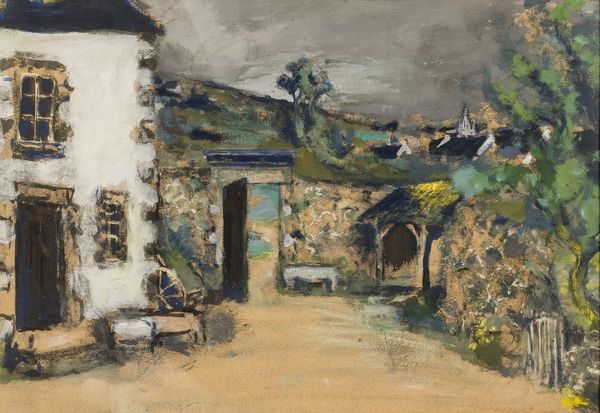
Copyright: Theodor Pallady,Fair Use
Editor: This is Theodor Pallady's "Eglise de Mimizan," created in 1937 using watercolor and pencil on paper. It strikes me as both delicate and a little lonely, with that church tower looming over the muted landscape. How do you interpret this work, considering the period in which it was made? Curator: I see a layering of histories within this seemingly simple landscape. Consider the role of the church, especially in 1937. Was it a place of solace, a symbol of oppressive power, or simply a backdrop to daily life in a world hurtling toward war? Pallady's loose Impressionistic style softens the architecture, blurring the lines between the institution and the community it served – or perhaps failed to serve. The delicate medium also speaks to the fragility of peace and the impending social upheaval. Editor: So, you're suggesting the style itself carries a kind of commentary? The looseness hints at instability? Curator: Precisely. The very act of sketching, of capturing a fleeting moment in watercolor, moves this beyond a simple architectural study. It asks us to consider what structures, both physical and societal, were being questioned and reshaped during this time. Were traditional institutions such as religion about to crumble like the fading edges of the watercolor washes? Editor: That’s fascinating. I hadn't considered the instability suggested by the technique itself. It gives a completely new dimension to the “loneliness” I initially felt. Curator: Art allows us this unique space, doesn't it? It lets us view historical events from oblique perspectives, encouraging us to challenge dominant narratives. What began as a landscape becomes an inquiry into the social and political fabric of its time. Editor: Thank you; that's a powerful reframing of this piece for me. It has provided such a thought-provoking look at the intersection of art and societal change.
Comments
No comments
Be the first to comment and join the conversation on the ultimate creative platform.
